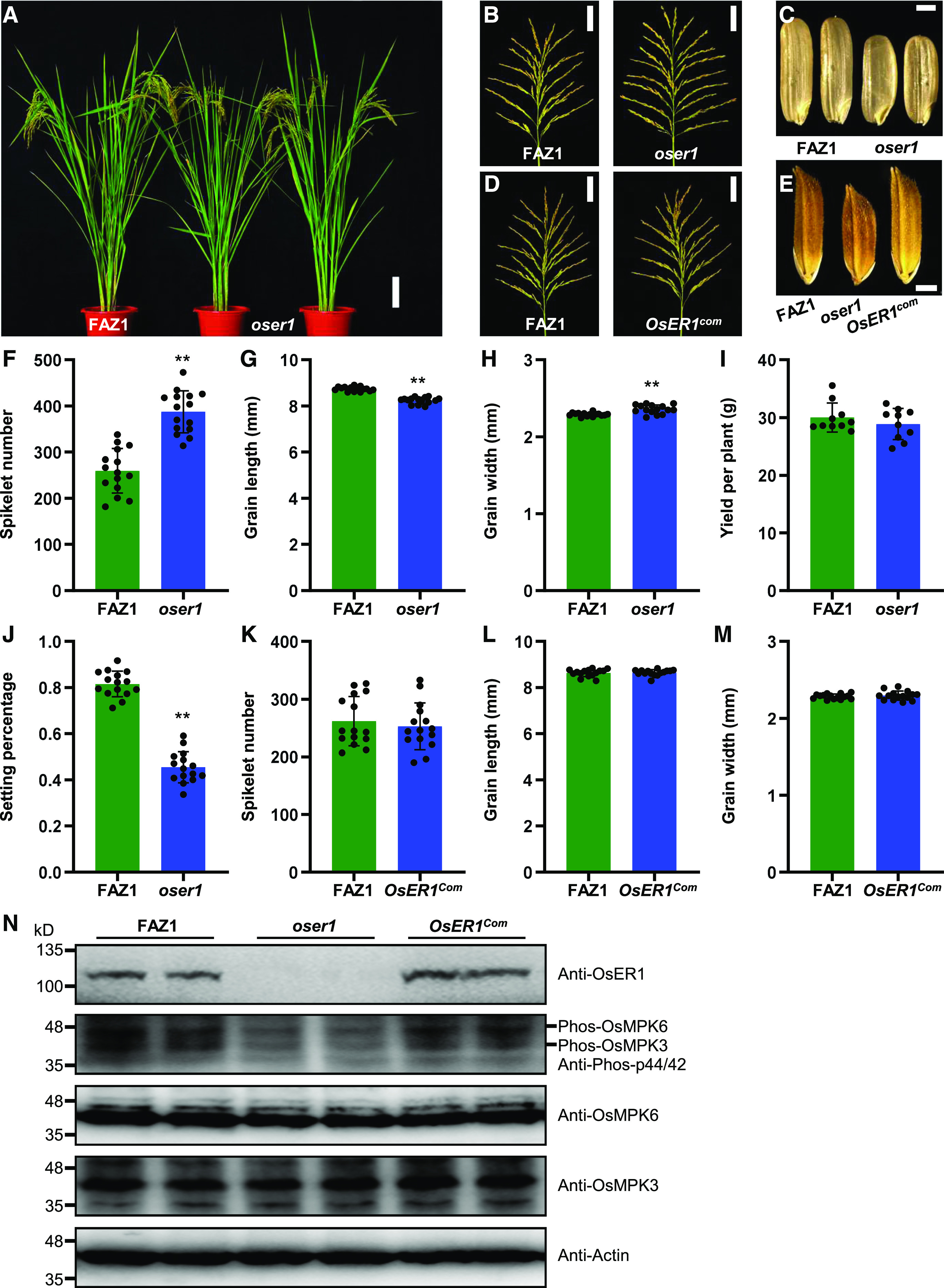Figure 1.

OsER1 Is Responsible for Rice Panicle Morphogenesis and Negatively Regulates Spikelet Number per Panicle.
(A) Plant architecture of wild-type FAZ1 and mutant oser1 plants at the reproductive stage. Scale bar, 10 cm.
(B) Rice panicles from FAZ1 and oser1 plants. Scale bar, 5 cm.
(C) Brown rice grains from FAZ1 and oser1. Scale bar, 2 mm.
(D) Comparison of panicles between FAZ1 and the complementation line OsER1com. Scale bar, 5 cm.
(E) Comparison of mature paddy rice grains between FAZ1, oser1, and OsER1com. Scale bar, 2 mm.
(F) to (J) Comparisons of average spikelet number per panicle (n = 15 plants) (F), grain length (n = 15 plants) (G), grain width (n = 15 plants) (H), yield per plant (n = 10 plants) (I), and seed setting percentage (n = 15 plants) (J) between FAZ1 and oser1.
(K) to (M) Comparisons of average spikelet number per panicle (n = 15 plants) (K), grain length (n = 15 plants) (L), and grain width (n = 15 plants) (M) between FAZ1 and the complementation line OsER1com. Values are given as the mean ± sd. **P < 0.01 compared with the wild type using Student’s t test.
(N) The phosphorylation level of OsMPK6 was reduced in the oser1 mutant but restored in OsER1com. Samples were prepared from 0.1-cm to 0.5-cm young panicles pooled from different plants and subjected to immunoblot analysis with the anti-OsER1, anti-Phospho-p44/42, anti-OsMPK6, and anti-OsMPK3 antibodies. The anti-Actin antibody was used as the loading control.
